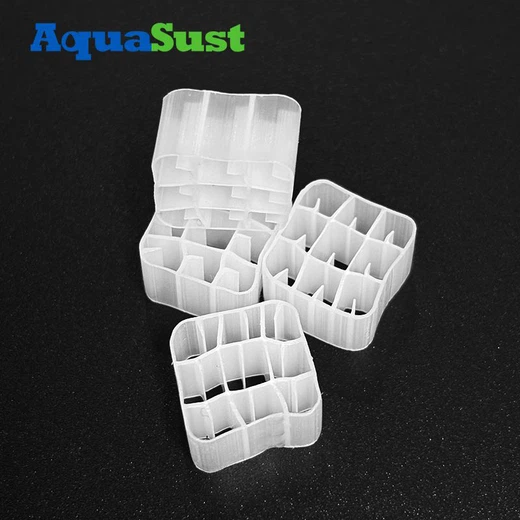How to Reduce Scaling of MBBR Media in Dairy Wastewater?
Introduction
We often use MBBR media in dairy wastewater to reduce the levels of BOD (Biochemical Oxygen Demand) and COD (Chemical Oxygen Demand) in the water. However, during the long-term water purification process, the surfaces of these MBBR (Moving Bed Biofilm Reactor) reactors may scale. At this time, the activity of the biofilm on the surface decreases, the water flow cannot pass through smoothly, and ultimately the wastewater fails to meet the discharge standards as scheduled. In this article, AquaSust will learn about the causes of scaling on the surface of these media and effective treatment measures. Please read on to learn more.
Causes of Scaling of MBBR Media in Dairy Wastewater
Water Quality: The organic matter in beverage wastewater, under the metabolic action of microorganisms, will produce viscous extracellular polymeric substances (EPS). It acts like glue to promote the aggregation of microorganisms and their adsorption on the surface of the media. At the same time, the high concentrations of inorganic ions such as calcium, magnesium, and phosphorus in the wastewater will form insoluble salts, which deposit on the surface of the MBBR media, forming a scale layer.
Microorganisms: The aforementioned viscous EPS can also capture suspended particles and colloids in the wastewater, accelerating the formation of the scale layer. In addition, the interactions between different microbial populations may also accelerate scaling. When filamentous bacteria grow excessively, they will form a complex network structure, providing attachment points for other microorganisms and impurities. This will cause the scale layer to thicken rapidly.
Operating Conditions: Factors such as temperature, PH value, and hydraulic retention time (HRT) will all affect the scaling rate of the surface of MBBR media. Within the temperature range of 25°C - 35°C, under alkaline conditions (pH > 8), when the hydraulic retention time (HRT) is too short, the scaling risk of the MBBR carriers will increase.
How Can We Reduce Scaling of MBBR Media?
(1) Pretreatment
Before the wastewater enters the MBBR system, we can install coarse and fine screens and lamella tube settlers to remove larger particulate suspended solids, fibers, and other impurities in the wastewater. It is also feasible to add regulators such as sulfuric acid, hydrochloric acid, or sodium hydroxide to the water, and adopt a coagulation sedimentation process. This is because it can cause the colloids and fine suspended solids in the wastewater to aggregate into large particles, which can be removed through sedimentation.
(2) Adjusting MBBR Operating Parameters
According to the existing water quality of dairy wastewater and the treatment objectives of the MBBR, we need to adjust the appropriate HRT, the influent concentration of the wastewater, and control the influent flow rate. In addition, don't forget to increase the number of diffusers to enhance the aeration intensity, so as to promote the fluidization of the media and flush the surface of the media.
(3) Biological Measures
This refers to screening microbial strains with high-efficiency EPS decomposition ability, and after acclimation, adding them to the MBBR system. Alternatively, we can also adjust the hydraulic shear force (adjust the aeration intensity and water flow rate) to maintain the biofilm thickness at an appropriate thickness (1 - 3mm).
(4) Adding Chemical Agents
Organic phosphonates and polycarboxylic acids are suitable scale inhibitors for dairy wastewater. They can keep the precipitated particles in a dispersed state through chelation, dispersion, and other means. However, when the scaling of the MBBR media is severe, using a cleaning agent for cleaning is a better method. This includes using acidic cleaning agents (such as hydrochloric acid, citric acid, etc.) for inorganic scales and alkaline cleaning agents (such as sodium hydroxide, sodium carbonate, etc.) for organic scales.
Conclusion
Due to the high concentration of organic matter, inappropriate operating conditions, and the action of microorganisms, the MBBR media are prone to scaling in dairy wastewater. However, we can often improve the situation through methods such as pretreatment, adjusting operating parameters, biological regulation, and the rational use of chemical agents.
To address this challenge, AquaSust has designed HDPE MBBR media with a special streamline structure. They support self-cleaning and maintain a uniform biofilm thickness to limit scaling. If you are interested, please contact us to learn more.






评论
发表评论